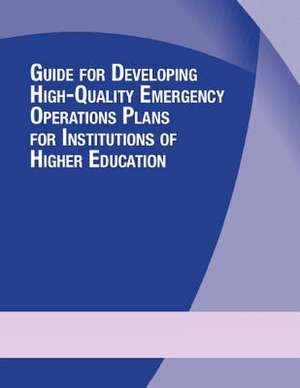Guide for Developing High-Quality Emergency Operations Plans for Institutions of Higher Education
Autor Homeland Securityen Limba Engleză Paperback
Preț: 129.01 lei
Nou
Puncte Express: 194
Preț estimativ în valută:
24.69€ • 25.63$ • 20.59£
24.69€ • 25.63$ • 20.59£
Carte disponibilă
Livrare economică 01-15 martie
Preluare comenzi: 021 569.72.76
Specificații
ISBN-13: 9781497472303
ISBN-10: 149747230X
Pagini: 92
Dimensiuni: 216 x 279 x 6 mm
Greutate: 0.24 kg
Editura: CreateSpace Independent Publishing Platform
ISBN-10: 149747230X
Pagini: 92
Dimensiuni: 216 x 279 x 6 mm
Greutate: 0.24 kg
Editura: CreateSpace Independent Publishing Platform
